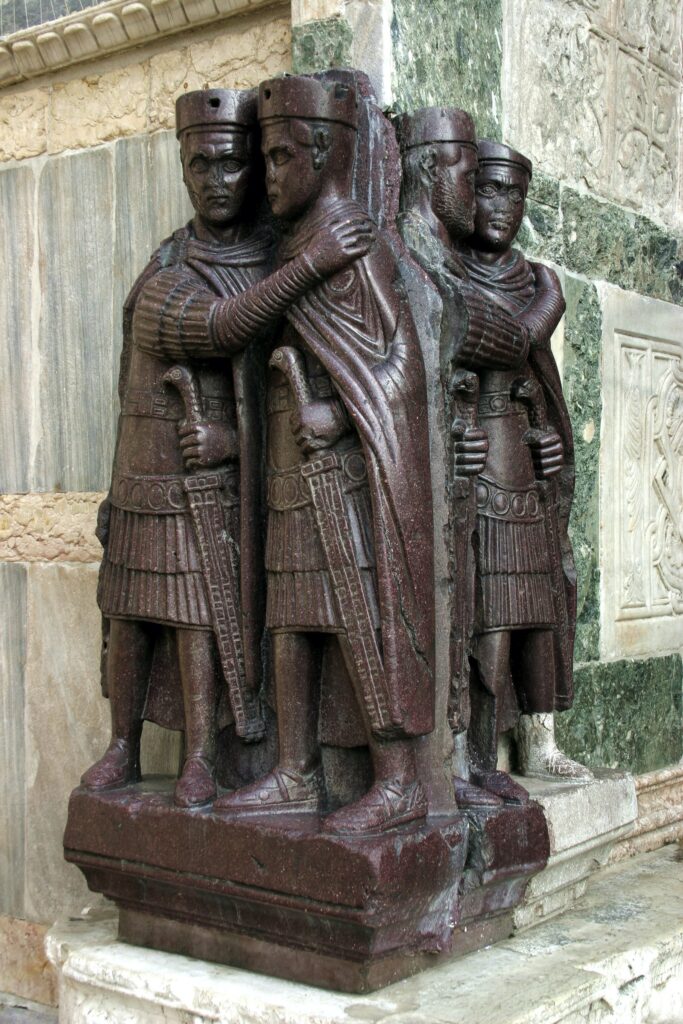The word tetrarchy literally means government of four; it was a form of power devised by Diocletian to facilitate control of the Empire in all its vast provinces. At first the system began with a diarchy, a government of two, when in 285 AD Diocletian called Marcus Aurelius Valerius Maximianus to his side as Caesar. The brave officer was elevated to the rank of Augustus in the following year. Both Augustus of equal dignity, the Empire was divided between Diocletian in the East and Maximian in the West, but Diocletian in fact maintained a supremacy, as he considered himself to be protected by Jupiter, while Maximian was protected by Hercules, son of Jupiter, thus taking the nickname of Herculius.
Later, in 293 AD, to better and more effectively manage the territory, Diocletian decided to divide the Empire into four parts, thus forming the Tetrarchy, giving himself and Maximian the title of Augustus, flanked by two Caesars, Constantius Chlorus in the West and Galerius in the East.
The division was administrative and non-political in nature, since final decisions were made by Diocletian in his role of Augustus Maximus.
This management of the Empire faced many difficulties, with struggles for supremacy led by different factions. The Tetrarchy was officially abolished in 324 AD with Constantine defeating his adversary Licinius, thus becoming the only Emperor of Rome.